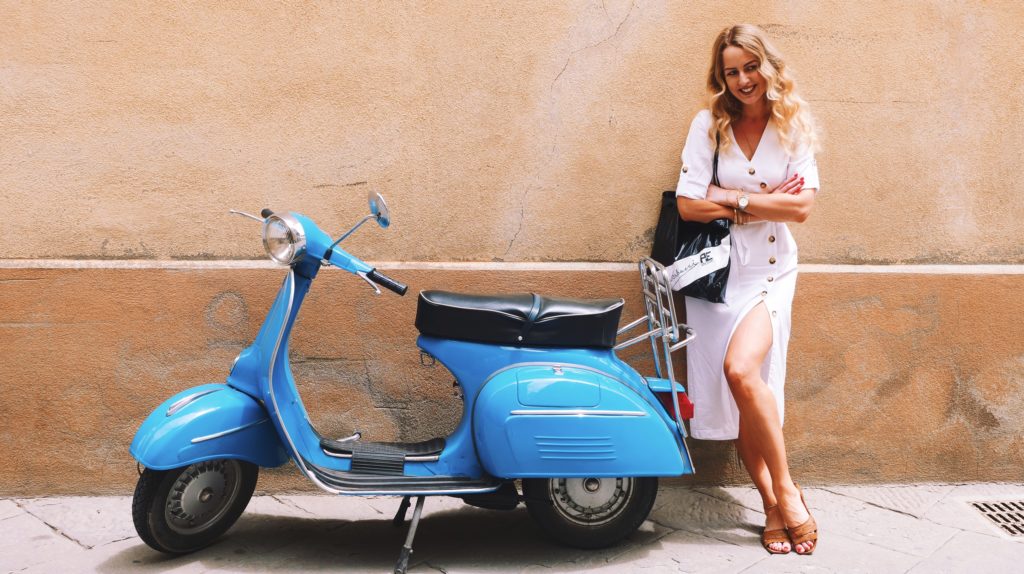As you most probably know, Italy played the quarter-final of the European Football Championship against Belgium last Friday. Their 2-1 win set the whole of Rome on fire. After a year of endless lockdowns, curfews and social distancing, the Italians celebrated it as if they had already won the cup. Down the lungotevere, the wide road that runs on both sides along the river through the heart of the city, there was an incessant stream of loudly honking scooters and cars. Italian flags hung out of the windows in the wind, fiercely showing its tricolore, and when they had to stop at a red traffic light, there was always someone standing on his scooter to stir things up even more. It may be clear, the azzurri are the national pride of Italy once again.
Why blue? The Italian flag consists of green, white and red, which makes Italy, together with the Netherlands, one of the few countries with a strong, well-known national colour that does not appear in its flag at all
Right, the azzurri, but why is the Italian national team called like that? And what does it even mean? Azzurro is a colour blue – bright blue, exactly like the Vespa scooter in the photo above this article – which means the players are literally called the ‘blues’. But why blue? The Italian flag consists of green, white and red, which makes Italy, together with the Netherlands, one of the few countries with a strong, well-known national colour that does not appear in its flag at all. The reason why the Dutchies completely turn orange is obvious. With a royal family carrying the surname ‘Van Oranje-Nassau’ – literally translated: from Orange – it’s not difficult to guess. But where does the blue of the Italians come from? I must confess that, until I started writing this blog, I didn’t know the answer either. That’s why I undertook a little research.
The male descendants of the Savoy family remained banned from the Republic of Italy until 2002 and hence, were unable to set foot on Italian soil
The answer is almost the same as why the Dutch national team plays in orange. From 1861 to 1946, the year in which the Italians used a referendum to vote for a republic which meant the end of the monarchy at the same time, the royal family of Savoy ruled over the Kingdom of Italy. The colour of this family was the blue that we still know today as the national colour of the Italian football team. Immediately, I asked myself whether in 1946, when the Royal Family was abolished, the Italians didn’t want to get rid of that colour blue too. After all, the male descendants of the Savoy family remained banned from the Republic of Italy until 2002 and hence, were unable to set foot on Italian soil. However, it was under the royal family of Savoy that Italy became united in 1861 and that it took the shape of the country as we still know it today. I think that for many Italians, the blue colour therefore reflects the unity that is all too often lacking in the country, especially when the great differences between the north and the south are highlighted once again. The national team, the azzurri, is one of the few things that truly belongs to national pride and unites young and old, north and south, and rich and poor.
So, when you go and watch the final on Sunday, you can show off a little by casually throwing this question into the group. “So guys, why are the Italians playing in blue anyway?”
So, when you go and watch the final on Sunday – in which the Italian team will undoubtedly be playing – with your neighbours, friends or in some kind of pub, you can show off a little by casually throwing this question into the group. “Guys, so why are the Italians playing in blue anyway?”. No doubt you are the only one who knows the answer, which, in true Italian fashion, makes you look good. Fare una bella figura, it doesn’t get any more Italian than that. Of course, those azzurri still have to survive the semi-final against Spain, but with the enthusiasm of the supporters, all dressed in azzurro blue, it can hardly go wrong anymore…
